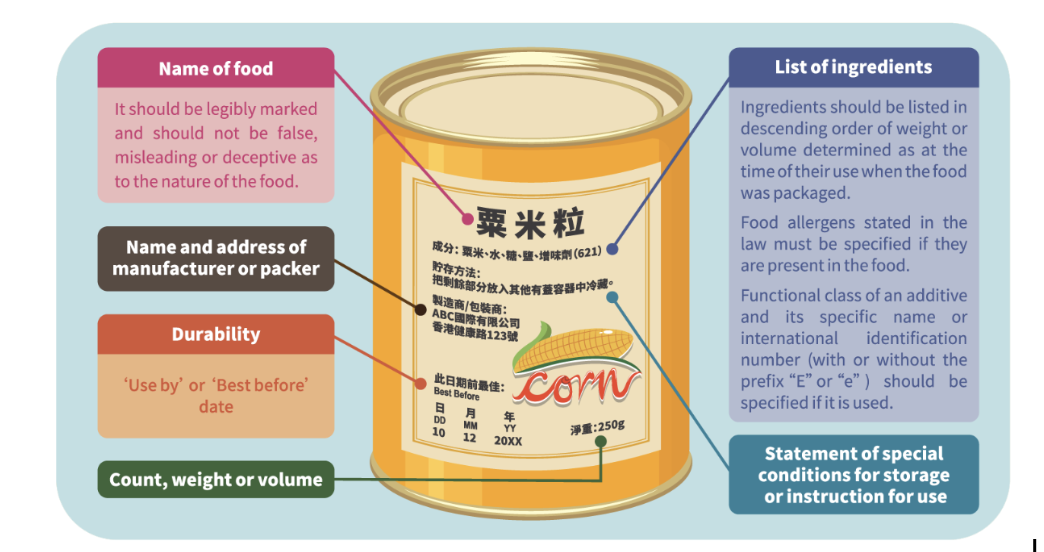Cracking the Code: Your Guide to Hong Kong's Food Labels
So, you’ve just navigated the thrilling, overwhelming, and utterly fantastic aisles of a Hong Kong supermarket. Your cart is full of treasures, from Japanese kit-kats to local sauces. But now, you’re home, staring at a package covered in numbers and a few dates. What does it all mean? Is that "best before" a strict deadline or a gentle suggestion? And what’s the deal with that nutrition table? Understanding these labels is one of the most powerful tools you have to reduce food waste at home. In this blog post, we’re setting out to help you understand what’s in your fridges and cupboards, and how this can help you reduce food waste at home.
The Date Decoder
Let’s clear up the biggest confusion first: not all dates are created equal. Hong Kong’s system distinguishes between safety and quality, and knowing the difference can save you money and prevent waste.
1. "Use By" Date: The Safety Deadline
Think of this as the strict rule for safety. It’s for highly perishable foods like fresh milk, yogurt, chilled meats, and ready-to-eat meals. This date is about microbiological safety. After this date, harmful bacteria could be a risk. The rule here is simple: for safety, do not consume after this date.
2. "Best Before" Date: The Quality Consultant
This is your guide to peak quality, not safety. The manufacturer guarantees the product’s perfect texture, flavour, or freshness until this date. Afterwards, it’s often perfectly safe to eat but might not be at its absolute best.
This is where your own senses become your most powerful tool against waste. This principle is at the very heart of what we do at CHOMP. Many of our partner vendors list products on our app that are nearing their "best before" date. They, like us, understand that these items are still in excellent condition, simply approaching the end of their guaranteed peak. It’s a core part of our mission to give great food a second chance. So, for your own pantry, consider this your license to sniff, look, and taste (if safe to do so!). If it looks and smells fine, it probably is.
3. "Sell By" / "Display Until" Date: A Note for Stores
This one is often the most misunderstood because it’s not for you, it’s for the retailer. This date helps shop staff with stock rotation, telling them how long to display a product for sale. It is not a safety guide. You should completely ignore this date and instead, look for the "Use By" or "Best Before" date to guide your decisions at home.
4. "Freeze By" Date: Your Secret Weapon
Seeing this date? It’s a golden ticket to preventing waste! This label suggests when you should freeze a product to maintain its peak quality. If you know you won’t eat that chicken breast or loaf of bread before its "Use By" or "Best Before" date, freeze it before that date arrives. Proper freezing essentially pushes the pause button, giving you weeks or even months of extra life.
Your Kitchen, Your Control: How Storage Fights Waste
Correct storage is just as important as understanding dates. Hong Kong’s humid climate can be tough on food, but a few simple habits can make a world of difference.
The Golden Rule: "Refrigerate after opening" isn't a suggestion, it's a necessity for longevity. Once opened, oxygen and microbes are introduced, speeding up spoilage. Getting those leftovers into airtight containers and into the fridge quickly is a game-changer.
Know Your Zones: Your fridge has different temperature zones. Keep dairy and meats on the colder shelves, and fruits and vegetables in the crisper drawers where the humidity is higher.
The Pantry: Store potatoes and onions in a cool, dark, and well-ventilated place (but not together, they make each other spoil faster!). Keep grains and flour in airtight containers to protect them from pantry moths and moisture.
By understanding these simple labels and storage hacks, you’re not just becoming a smarter shopper, you’re actively fighting food waste. The power to extend the life of your food is in your hands. Here’s to eating well, wasting less, and building a more sustainable food community together!

